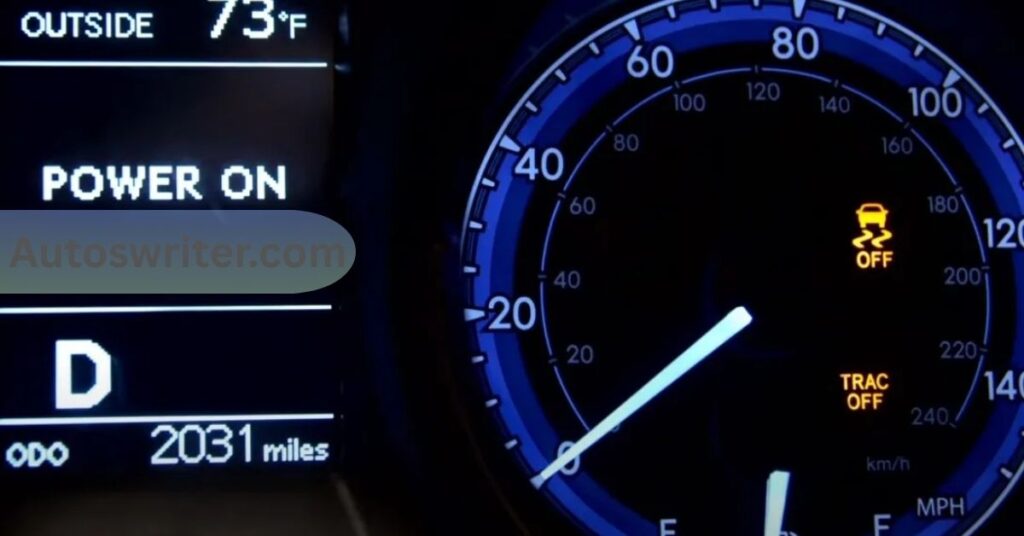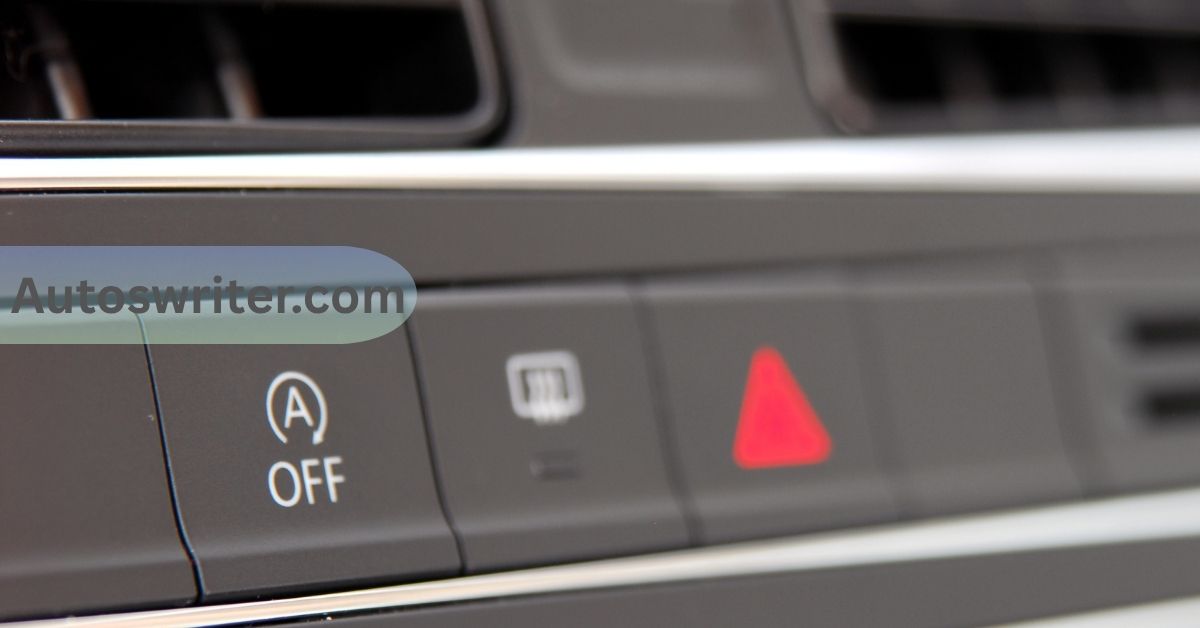If you’re driving a Toyota and see the “VSC” light on your dashboard, it means something important. VSC stands for Vehicle Stability Control. It’s a safety system in Toyota vehicles that helps you stay in control when driving in slippery conditions or during sudden manoeuvres. But when the VSC light stays on, it usually signals a problem that needs attention.
This guide breaks down how the VSC system works, the reasons behind the warning light, common triggers, and the steps you can take to resolve it. Everything is kept simple, easy to follow, and based on real issues Toyota drivers experience.
What Is the VSC System in a Toyota?
Vehicle Stability Control (VSC) is a critical safety feature designed to help your car maintain balance and control. It operates alongside systems like Anti-lock Brakes (ABS) and Traction Control (TRAC) to improve handling and reduce the risk of skidding or loss of control. It detects when your car starts to slide or lose grip and reacts quickly by reducing engine power and applying brakes to specific wheels.
For example, if you turn too quickly on a wet road and your rear tyres start to slip, the VSC system will help correct the movement to prevent a spin.
VSC is especially helpful in rain, snow, and other low-traction situations.
What Does It Mean When the VSC Light Comes On?
When the VSC light turns on and stays on, it usually means:
- The system is turned off manually.
- There’s a problem with a sensor.
- The system detected a fault and is no longer active.
At times, the VSC warning light shows up alongside the Check Engine Light (CEL). When both lights are on, it often means the engine issue is causing the VSC system to shut off.
Is It Safe to Drive With the VSC Light On?
In many situations, it’s still possible to drive with the VSC light illuminated. However, the stability control system will be inactive, which can affect how your vehicle responds in sudden or hazardous conditions. On wet, snowy, or slick roads, extra caution is strongly advised.
If the light comes on with the Check Engine Light and you feel the car shaking or stalling, it’s best to get it checked right away.
Common Reasons the VSC Light Comes On:

Let’s break down the most common causes:
1. Manual VSC Shut-Off:
Some Toyota models have a button labelled “VSC OFF” or a skidding car icon. Pressing it turns off the system. When the system is disabled, the ‘VSC OFF’ indicator will appear on your dashboard. To reactivate it, press the button once more.
2. Check the Engine Light Trigger:
In many Toyotas, the VSC system automatically shuts off if the Check Engine Light is on. This happens even if the VSC itself is fine. The system is linked to engine sensors. Fixing the engine issue usually resets the VSC light.
3. Faulty Wheel Speed Sensor:
The VSC system uses wheel sensors to monitor movement. If one of these sensors is dirty, damaged, or not sending data, the system can’t work correctly.
4. ABS or Brake Issues:
Since VSC relies on the ABS to apply brakes to specific wheels, any ABS issue may also affect the VSC.
5. Yaw Rate or Steering Angle Sensor Fault:
These sensors help VSC understand the car’s direction and movement. If they’re off or broken, the system can’t make good decisions.
6. Mismatched or Improper Wheels:
If you’ve changed your tyres or rims—especially with different sizes or non-Toyota wheels—this can affect wheel speed readings. Some users reported this after installing winter tyres or aftermarket rims.
Also Read: Is 88 Fuel Good For Your Car Toyota?-Expert Insights
How to Reset or Turn Off the VSC Light:
Before trying to reset the light, make sure it’s not due to a real issue. Here are simple steps you can try:
- Use the VSC Button
- Make sure the car is in Park.
- Press and hold the “VSC OFF” button for 3–5 seconds.
- You’ll see the VSC and TRAC lights turn off.
- If this works, your system was just manually turned off.
1. Restart the Engine:
Sometimes, turning the car off and back on resets the light. This works if the light comes on due to a temporary sensor glitch.
2. Check the Gas Cap:
Believe it or not, a loose or missing gas cap can cause the Check Engine Light and VSC light to turn on. Make sure it’s tight and in place.
3. Scan for Error Codes:
If the lights stay on, use an OBD2 scanner to check for trouble codes. This gives clues about what’s wrong. Many auto parts stores offer this scan for free.
When You Should See a Mechanic:
Some VSC problems require a technician:
- If the Check Engine Light is also on
- If the car shakes or feels unstable
- If you hear grinding or notice poor braking
- If you replaced wheels or sensors recently
A professional can read the exact error codes and inspect sensors or wiring. Repairs involve replacing a sensor, fixing wiring, or updating the vehicle’s computer.
Why the VSC Light Often Comes With Other Lights:
Many Toyota owners see the VSC light turn on with:
- Check Engine Light
- ABS Light
- TRAC OFF Light
These systems work together, so when one malfunctions—like a faulty oxygen sensor—it can cause others, including the VSC, to shut down temporarily. Fixing the root issue often clears multiple warning lights at once.
VSC System in Different Toyota Models:
The VSC system is standard in many Toyota models, including:
- Toyota Camry
- Toyota Corolla
- Toyota Highlander
- Toyota RAV4
- Toyota Prius
- Toyota Avalon
On most of these, the VSC button is located near the gear shift or next to the steering wheel. The icon looks like a car with skid marks underneath.
Refer to your owner’s manual if you’re unsure.
When to Turn Off the VSC System (and When Not To):

You might want to turn off VSC in some situations:
- Driving in deep snow or sand, where limited wheelspin helps
- Getting the car unstuck
But remember:
- With VSC off, you lose traction and stability help
- The system resets when you restart the car.
Keep VSC on during everyday driving. It’s there to protect you.
Also Read: How to Program Toyota Key Fob-Step by Step Guide for Owners
Summary: Key Things to Know About the VSC System in Toyota:
- VSC keeps your car stable by adjusting power and brakes.
- If the VSC light turns on, it may be off manually, or there could be a fault.
- Check for engine or ABS issues if the light stays on.
- You can reset it with the VSC button or by fixing related engine issues.
- For ongoing problems, get the system checked by a certified technician.
Staying informed helps you avoid bigger issues and keeps your Toyota safe and reliable.
Frequently Asked Questions:
Q1. Can I drive with the VSC light on?
Yes, but you should drive cautiously. With VSC off, your vehicle loses stability support, especially on wet or slippery roads. It’s best to get it checked soon.
Q2. How do I turn the VSC light off?
Press and hold the “VSC OFF” or “TRAC OFF” button for about 3 seconds. If the light doesn’t turn off, it may indicate a system issue that requires diagnosis.
Q3. Why does the VSC light come on with the check engine light?
The VSC system often disables itself when the check engine light (CEL) is triggered—especially if the engine issue affects performance or emissions.
Q4. What’s the cost of fixing a VSC system issue?
Costs vary: a gas cap fix is free, while sensor replacements can range from $100–$500. Brake system issues or ABS module faults may be higher.
Q5. Is it safe to reset the VSC light without fixing the root issue?
Resetting the light without identifying the cause may hide a serious problem. Always scan for codes or have a professional inspect it before assuming it’s harmless.
Conclusion:
The VSC system in your Toyota isn’t just a fancy acronym—it’s an essential safety feature that helps keep you in control during critical moments. If the VSC light comes on, it’s your vehicle’s way of saying something isn’t right, whether it’s as minor as a loose gas cap or something more complex like a faulty sensor.
While you can usually continue driving cautiously, it’s always best to inspect the cause as soon as possible. Whether you perform simple checks at home or visit a trusted mechanic, acting promptly can prevent more serious issues and keep your Toyota running safely.



